Japchae is a traditional Korean glass noodle dish made with sweet potato starch noodles, stir fried colorful vegetables, protein, and toss together with a sweet and savory soy based sauce.
This is a simple, easy version of vegetarian japchae that cuts down a lot of the prep and cook time. It’s ready in under 30 minutes and tastes delicious!
It’s quick and easy! Traditionally, japchae takes a long time because each vegetable is stir fried separately. But this is a simplified, easy recipe that will be ready in under 30 minutes, and it still tastes amazing!
The Korean glass noodles have a really nice chewy and soft texture. They’re great at absorbing sauces and flavors.
This vegetarian japchae is full of healthy crunchy, colorful vegetables! The carrots, peppers, and onions are stir fried quickly to keep their crunch and add amazing texture to this dish! A great way to get in veggies!
The japchae sauce is a sweet and savory sauce made of brown sugar, dark soy sauce, and sesame oil. It’s the perfect balance of sweet and savory.
You can make this ahead and serve it the next day. Simply reheat it in the microwave. You can also serve this at room temperature, serve it warm, or even cold. It’s very versatile!
Korean glass noodles – also known as dangmyeon, sweet potato starch noodles, or japchae noodles. These noodles are slightly chewy and turn translucent when cooked. A must have for making this recipe.
Shiitake mushrooms – it gives this vegetarian dish a meaty flavor
Colorful vegetables – red and yellow bell pepper, carrots, spinach
Soy sauce – a must have for the japchae sauce
Brown sugar – adds the perfect amount of sweetness
Dark soy sauce – gives it a deeper color that contrasts beautifully with the colorful veggies
Yaki Udon • Stir Fried Udon Noodles
The Best Chicken Lo Mein
Pad See Ew Thai Noodles
The Ultimate Korean Fried Chicken
Korean Beef Tacos with Cabbage Slaw and Pickled Cucumbers
Easy Tteokbokki • Spicy Korean Rice Cakes
15 Minute Korean Beef Bowl
Sweet & Tangy Pineapple Chicken Stir Fry
Home » Recipes » Main Dishes » Easy Japchae (Korean glass noodle stir fry)
EASY JAPCHAE (KOREAN GLASS NOODLE STIR FRY)
Published: Jun 28, 2020 · Modified: Jun 28, 2020 by Jamie · This post may contain affiliate links · 35 Comments
2.1K
SHARES
Jump to Recipe
A simple, easy recipe for vegetarian Japchae, also known as Korean glass noodles with stir fried vegetables. It’s made with sweet potato starch noodles, colorful vegetables, and tossed in a savory sauce!
japchae noodles with red peppers, carrots, and shiitake mushrooms in a white bowl with chopsticks
Japchae is a traditional Korean glass noodle dish made with sweet potato starch noodles, stir fried colorful vegetables, protein, and toss together with a sweet and savory soy based sauce.
This is a simple, easy version of vegetarian japchae that cuts down a lot of the prep and cook time. It’s ready in under 30 minutes and tastes delicious!
Pumpkin Chocolate Chip Muffins with Streusel
×
Jump to:
Why you’ll love this recipe
Ingredients you’ll need
Step by step instructions
Expert tips & tricks
Ingredient substitutions & variations
Storing & reheating leftovers
Frequently Asked Questions
Recipe
WHY YOU’LL LOVE THIS RECIPE
japchae glass noodles with colorful vegetables held up by chopsticks
It’s quick and easy! Traditionally, japchae takes a long time because each vegetable is stir fried separately. But this is a simplified, easy recipe that will be ready in under 30 minutes, and it still tastes amazing!
The Korean glass noodles have a really nice chewy and soft texture. They’re great at absorbing sauces and flavors.
This vegetarian japchae is full of healthy crunchy, colorful vegetables! The carrots, peppers, and onions are stir fried quickly to keep their crunch and add amazing texture to this dish! A great way to get in veggies!
The japchae sauce is a sweet and savory sauce made of brown sugar, dark soy sauce, and sesame oil. It’s the perfect balance of sweet and savory.
You can make this ahead and serve it the next day. Simply reheat it in the microwave. You can also serve this at room temperature, serve it warm, or even cold. It’s very versatile!
INGREDIENTS YOU’LL NEED
ingredients for japchae recipe
Korean glass noodles – also known as dangmyeon, sweet potato starch noodles, or japchae noodles. These noodles are slightly chewy and turn translucent when cooked. A must have for making this recipe.
Shiitake mushrooms – it gives this vegetarian dish a meaty flavor
Colorful vegetables – red and yellow bell pepper, carrots, spinach
Soy sauce – a must have for the japchae sauce
Brown sugar – adds the perfect amount of sweetness
Dark soy sauce – gives it a deeper color that contrasts beautifully with the colorful veggies
STEP BY STEP INSTRUCTIONS
First mix the japchae sauce together in a small bowl and set it aside.
Boil the Korean glass noodles according to the directions. Be careful not to overcook them. Drain the water and add the sauce to the hot noodles. All the sauce will get absorbed by the noodles after several minutes.
Cook the egg whites and egg yolks separately in a flat plan. Cut them into strips and set it aside.
Heat a pan over medium high heat and start stir frying the mushrooms and onions together. Next add the garlic, carrots, and peppers and stir fry for 1 to 2 minutes.
Be careful not to overcook the vegetables. They should still have a bit of crunch.
Finally, add the baby spinach and toss it together until they wilt.
By now, the noodles should have absorbed all of the japchae sauce and should be a rich, deep color.
Serve immediately or store it in an airtight container and keep it in the fridge for up to 3 days.
Don’t overcook the glass noodles – the noodles should have a chewy, al dente texture. Overcooking the noodles also prevents it from absorbing all of the japchae sauce so keep an eye on the timer.
Don’t overcook the vegetables – the vegetables should be crisp and crunchy to contrast with the chewy texture of the noodles. Add the vegetables in at different times according to their cook time. Vegetables that take longer should be added first while the ones that take shorter (like spinach) should be added last.
Add the sauce while the noodles are hot – this helps the noodles absorb all the sauce and prevents them from sticking together. I prefer not to rinse the noodles as it makes them too watery for me and they absorb flavors better when they’re hot.
Other vegetables – broccoli, zucchini, green beans, sugar snap peas, cabbage
Other vegetarian proteins – fried tofu, edamame, tempeh
Non-vegetarian proteins – pork, chicken, beef
Make it spicy – add a tablespoon of Korean red pepper flakes (gochugaru) to the sauce
STORING & REHEATING LEFTOVERS
Store leftovers in an airtight container and keep it in the fridge for up to 3 days.
You can make this ahead the day before and serve it the next day.
The noodles will harden and turn opaque when cold.
Reheat it in the microwave until the noodles get soft and turn translucent.
FREQUENTLY ASKED QUESTIONS
What is japchae?
Japchae (pronounced ‘chop chay’) is a traditional Korean glass noodle dish made with sweet potato starch noodles, stir fried colorful vegetables, protein, and toss together with a sweet and savory soy based sauce.
The literal translation of japchae means mixed vegetables. But overtime, Koreans started adding sweet potato starch noodles to this dish.
It’s served during special occasions and holidays but can also be enjoyed as a regular side dish or entree. It’s popular because of its versatility and ability to make ahead.
Are japchae noodles healthy?
The noodles are made with sweet potato starch noodles and are naturally low in fat and calories. They are also gluten free but as always check the packaging for details for your specific brand.
Is it served hot or cold?
This recipe can be serve both hot and cold. It tastes just as good served at room temperature or heated up. It’s a popular dish in Korea for gatherings because of this reason.
Can I make this spicy?
Absolutely! My favorite way to make this spicy is adding Korean red pepper flakes (gochugaru) to the sauce. You can find it in most Asian grocery stores.
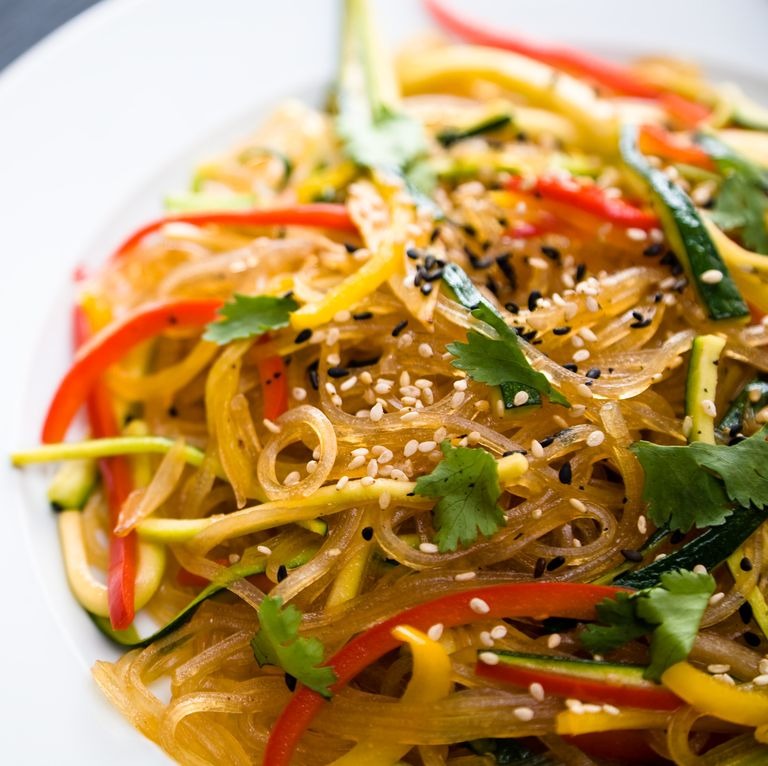


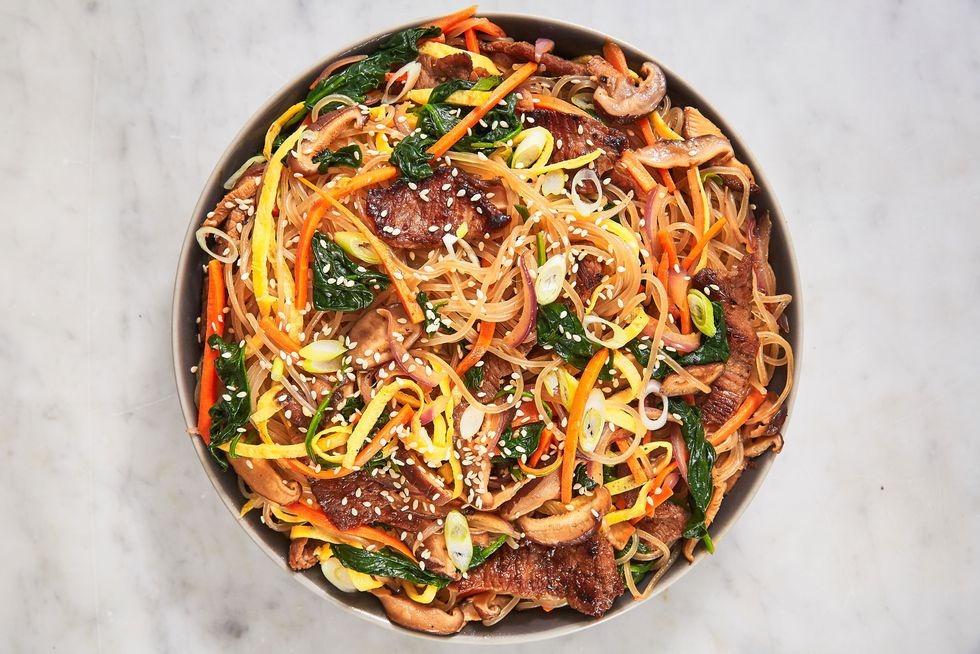
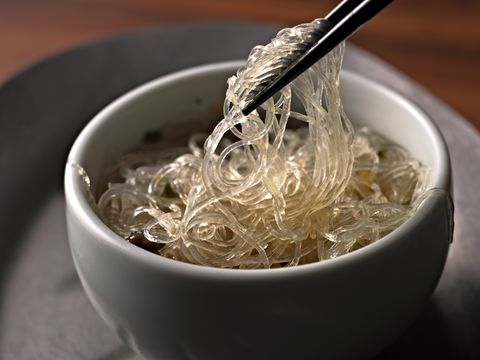
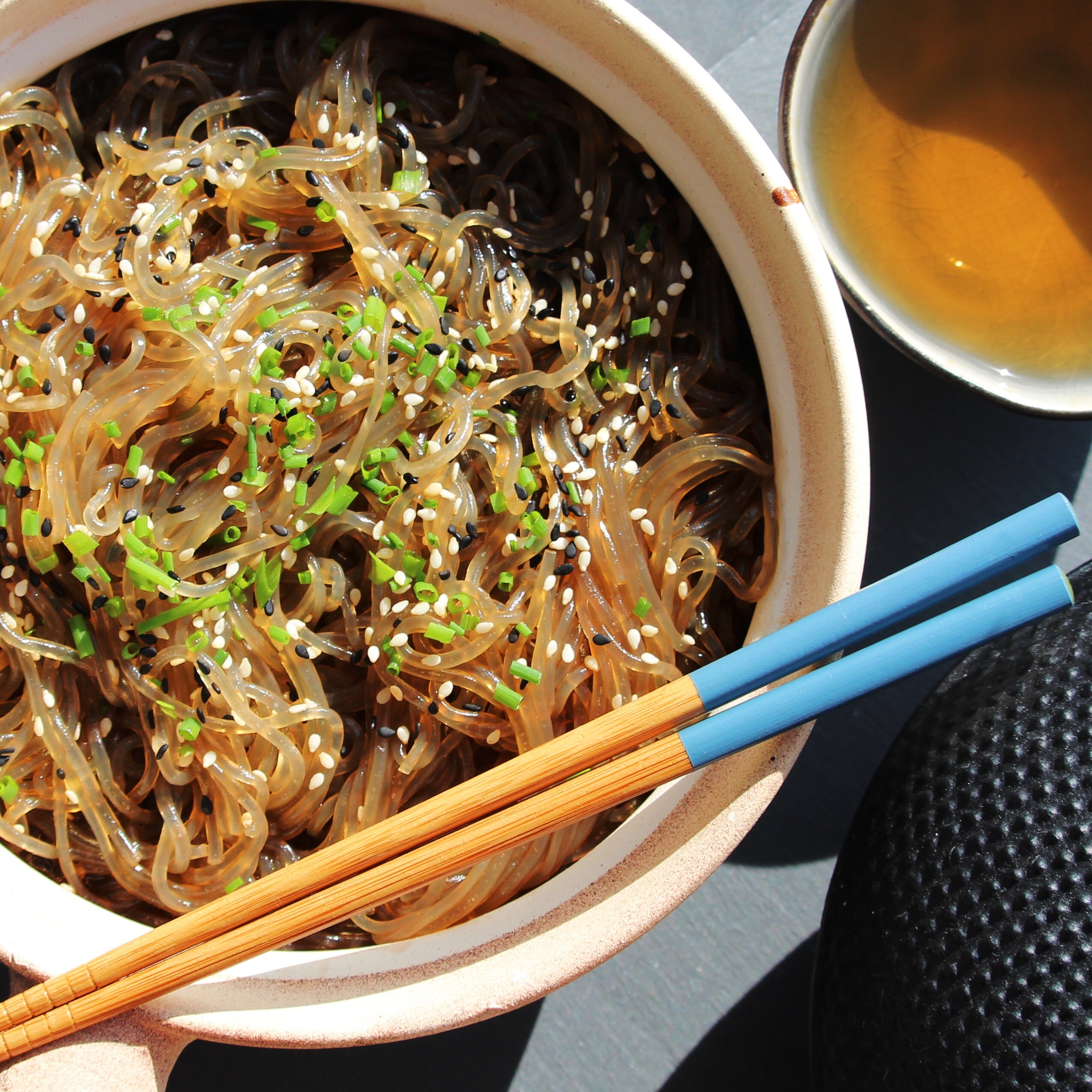
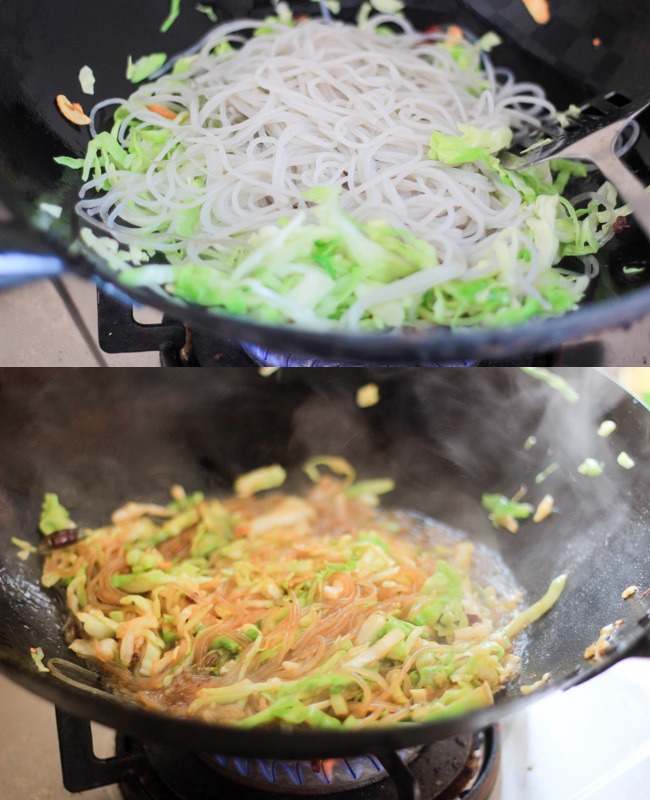























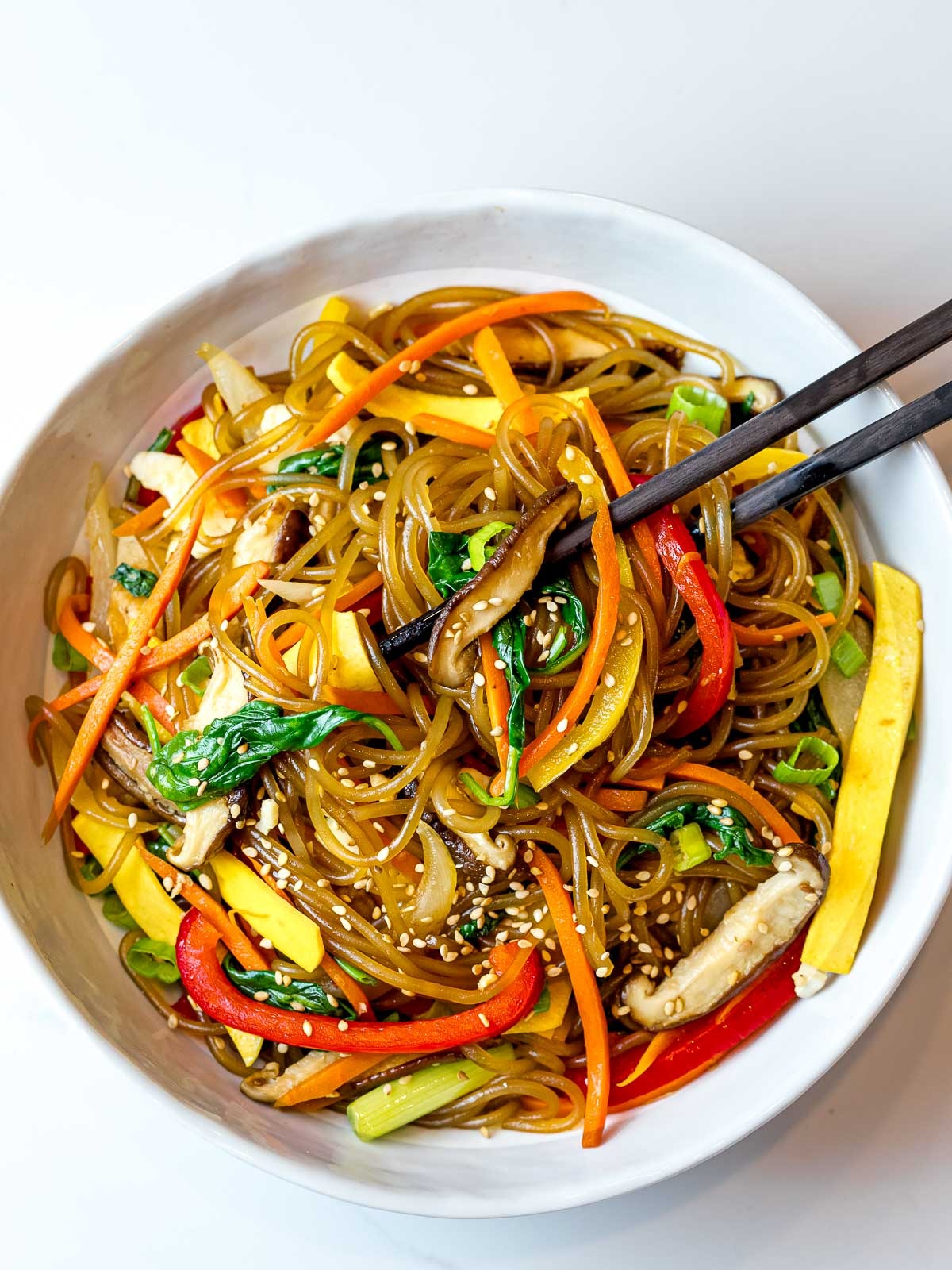
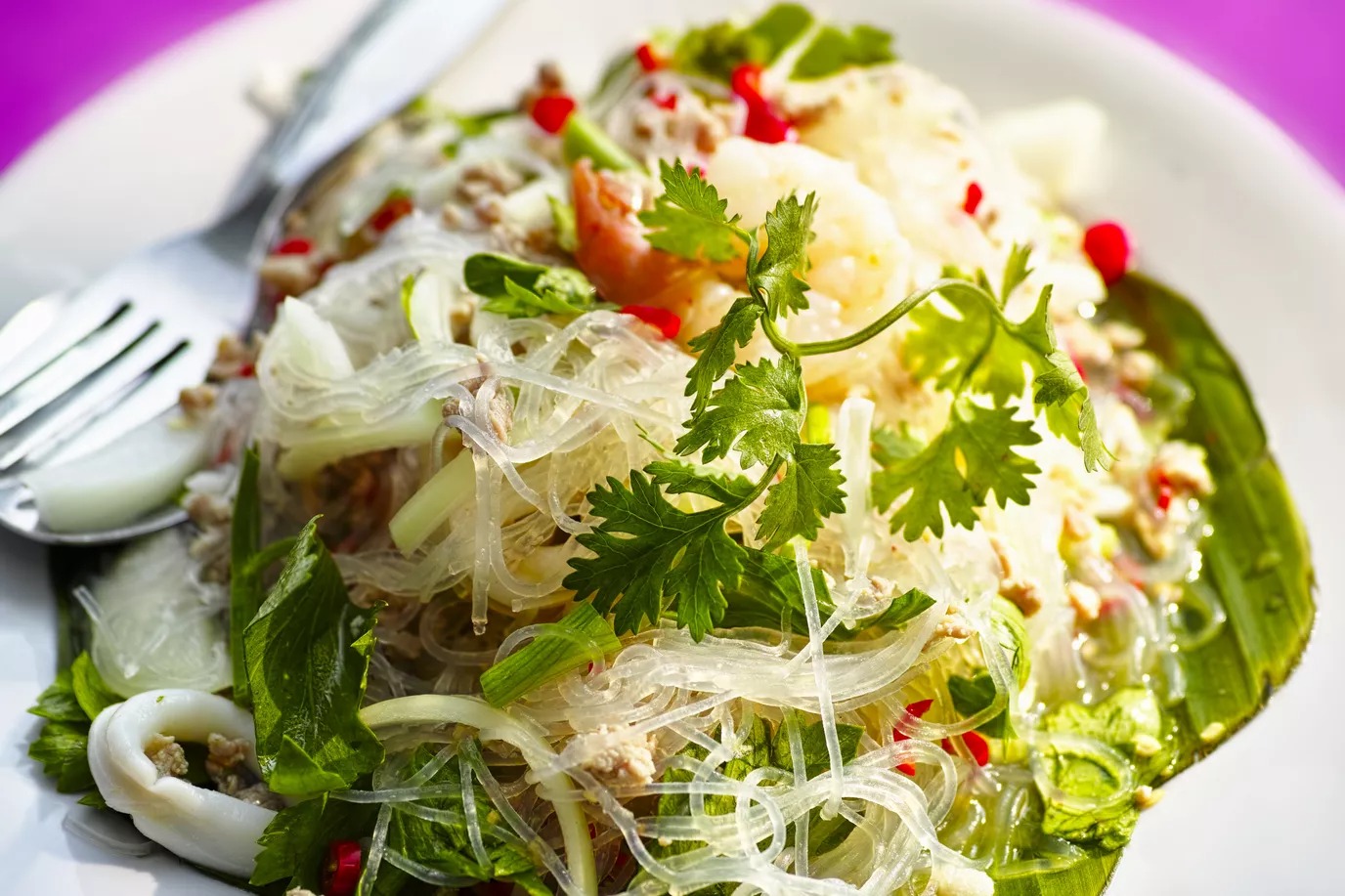




You must be logged in to post a comment.